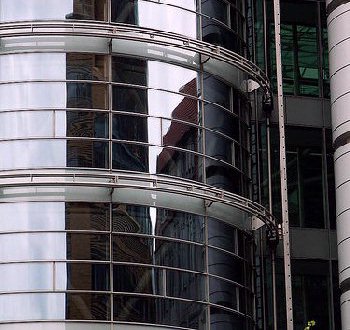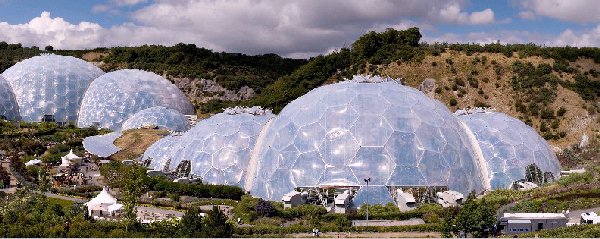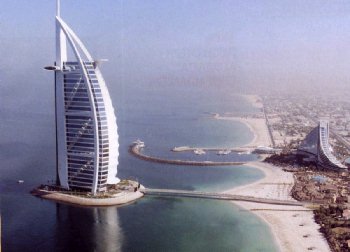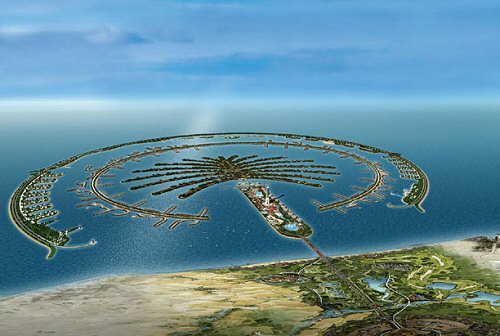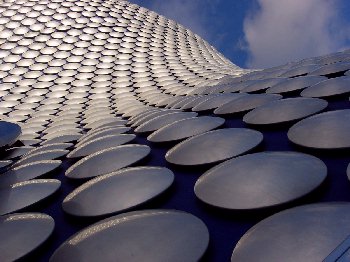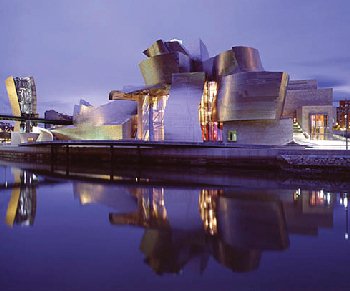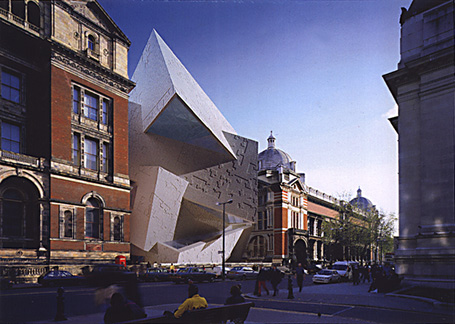| Contemporary Architecture
The Art History Archive - Architecture
Not FuturisticBy Charles Moffat - December 2007. You'd think that contemporary architecture would be all futuristic and doing something different, but frankly it is not. Instead there are four main ideas that contemporary architects are dealing with:

So when you think about it we're really not doing a lot that people consider to be "futuristic"... with rare exceptions. The Burj Dubai building for example is about as futuristic as it gets. Although really, what is there left to do in architecture except go up? The CN Tower had the tallest standing structure prize for 30 years before the Burj Dubai building passed it. Now countries and companies from around the world are in a race to beat it, and beat it by a long shot. But is building "Towers of Babel" really that futuristic? Well, the technology that goes into keeping the structure up (and flexible) is, and the extreme height is enough to cause dizziness and nose bleeds. So they are certainly a technological and engineering marvel. Compared to 30 years ago however the technology really hasn't changed much however. We still use glass, steel and concrete. We still use architectural concepts passed down by pioneering architectural engineers like Buckminster Fuller. I think the primary difference now is that there is suddenly the need, not the desire, to build taller in city centres. The problem is city sprawl is costing the economy due to transportation issues. Costly subway lines Vs. high oil prices means that there is now a stronger need for people to live downtown, close to work and the things they need. So in the future buildings will be skyscrapers, high density (like the Burj Dubai above), and presumably more energy efficient (like the Eden Project below). Part of it is the growth in private wealth. The CN Tower was built be the Canadian National Railroad Company. It was a monumental project meant to advertise their wealth, prestige and effort to draw more people into using the train for transportation of goods and people. The Burj Dubai however is being built by private investors rich from oil money. This means they invest in building things to suit their interests, such as sail boats which inspired the hotel "Burj Al Arab" also in Dubai (seen right). The Burj Al Arab was designed to look like a sailboat from a distance and features hotel rooms, condos, a casino and a helicopter pad on the roof. Everyone in Dubai seems to be excited about architecture these days. They aren't just reaching to the sky either. They are changing their very environment and the ground they walk on, such as the brilliantly designed Palm Beach Island (below).
Indeed the creators of some of these marvels are also aiming to go beneath the seas and create an underwater casino and hotel. I would argue this is the real direction our contemporary and future architecture will take: The sky, the sea and the ground will be redesigned as we see fit. Hopefully mother nature will agree with the changes we make and we make space within these architectural spaces for more greenery. Too much concrete can be boring.
Futuristic
(Interior Image / Exterior Image) Organic Architecture
(Interior Image / Exterior Image) (1st Image / 2nd Image / Detail) (Image) Re-Use of Buildings
(Interior Image) (Image) (Image) The Computer
(Image) (1st Image / 2nd Image) (Image) |
|
|
Deconstructivismis a development of postmodern architecture that began in the late 1980s and early 1990s. It is spearheaded by ideas of fragmentation and a tendency to look like crystals. The style uses non-rectilinear shapes (usually triangles) which serve to distort the shape of the structure and create jutting sections for extra space. The finished visual result looks chaotic and unpredictable, but allows for extra space in ways not previously thought of.Deconstructivism was a major theoretical theme during the 1982 Parc de la Villette architectural design competition in which entries from Jacques Derrida, Peter Eisenman and Bernard Tschumi's winning entry drew a lot of attention to the potential of the style to create buildings that look different and allow for unusual jutting areas of extra space. The Museum of Modern Artís 1988 Deconstructivist Architecture exhibition in New York, organized by Philip Johnson and Mark Wigley, and the 1989 opening of the Wexner Center for the Arts in Columbus, designed by Peter Eisenman, helped to further cement the foundation of a new architectural movement. The New York exhibition featured works by Frank Gehry, Daniel Libeskind, Rem Koolhaas, Peter Eisenman, Zaha Hadid, Coop Himmelblau, and Bernard Tschumi. Since the exhibitions many of the architects who were associated with Deconstructivism have distanced themselves from the term. Nonetheless, the term has stuck and has now, in fact, come to embrace a general trend within contemporary architecture. Originally some of the architects known as Deconstructivists were influenced by the ideas of the French philosopher Jacques Derrida. Eisenman developed a personal relationship with Derrida, but even so his approach to architectural design was developed long before he became a Deconstructivist. For him Deconstructivism should be considered an extension of his interest in radical formalism. Some practitioners of deconstructivism were also influenced by the formal experimentation and geometric imbalances of Russian Constructivism. There are additional references in deconstructivism to 20th-century movements: the modernism/postmodernism interplay, expressionism, cubism, minimalism and contemporary art. The attempt in deconstructivism throughout is to move architecture away from what its practitioners see as the constricting 'rules' of modernism such as "form follows function," "purity of form," and "truth to materials."
Some people believe that Deconstructivism is concerned with the "metaphysics of presence", but that idea is essentially architectural theory "gobblygook". The presupposition is that architecture is a language capable of communicating meaning and of receiving treatments by methods of linguistic philosophy. The dialectic of presence and absence, or solid and void occurs in much of Eisenman's projects, both built and unbuilt. Both Derrida and Eisenman believe that the locus, or place of presence, is architecture, and the same dialectic of presence and absence is found in construction and deconstruction. Like I said, theoretical gobblygook. Some people get far too much into analyzing a style that they're basically making up bullshit in an attempt to explain it. | ||
